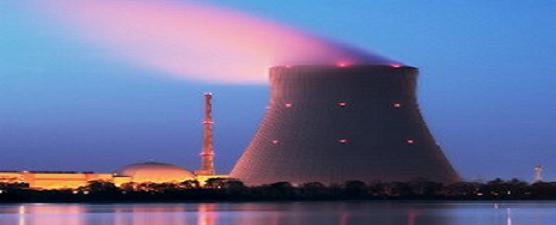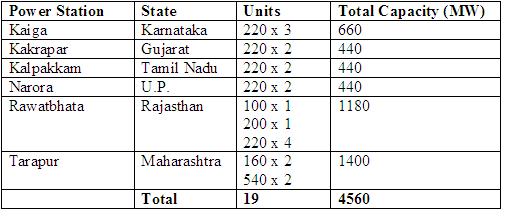- Articles ›
- Operations and IT ›
- Nuclear Energy Operations in India : The Next step Articles
Nuclear Energy Operations in India : The Next step
Industries, business organisations, manufacturing units, factories etc all require energy for their operations. Various sources like thermal energy, renewable energy, hydro-electric energy, wind energy etc provide the power for these. But the future of business and power lies with Nuclear energy.

At present, India has 19 nuclear reactors with a capacity of generating 20000 MW power, which is to be raised to 45000 MW by 2020, for providing India sustainable energy. India is also working on using thorium as a nuclear fuel, and with its abundance in India, it will make India a global leader in the field of nuclear science. As a part of Nuclear Suppliers Group (NSG) India has signed nuclear deals with several other countries including France, United States, United Kingdom, Canada, Namibia, Mongolia, Argentina & Kazakhstan.It has also signed a $700million deal with Russia for the supply of 2000 tons nuclear fuel.
A brief summary of the nuclear reactors present in India can be seen below.

Operations in a power plant are very different from that present in manufacturing units. Nuclear power plants have a very different operating process as the human factor plays a minor role. The biggest job for people is just monitoring the processes as physically employees cannot contribute. Nuclear power plants have highly sensitive and sophisticated equipment to detect and prevent radioactivity. Safety of employees and security of the plant is of prime importance. Concepts like just in time and inventory management are limited as once a controlled sustainable reaction starts; the process takes months till the Uranium fuel needs to be replaced. However, checks on processes and preparedness for emergencies is the most important aspect of operating a nuclear power plant.
Environmental surveillance and safety surrounding the area of a nuclear plant is one of the prime objectives of operational activities to be undertaken. Pre-operational surveillance is continuously carried out at every site for nuclear plants which is compared and evaluated by comparing to existing natural radioactivity in the vicinity. Sampling of areas surrounding the location within a radius of 30 km are regularly monitored which covers examination of airborne particles, sea water, vegetation, animals, milk, drinking water etc. Operations also cover body radioactivity monitoring of employees as well as people living in the area and studied for radioactive testing. Other operational activities involve monitoring thermal release, offshore survey, intercalibration & quality control and being prepared for any emergencies. All these operations are carried within the permissible standards laid down by Department of Atomic energy (DAE), BARC (Bhabha Atomic Research Centre), IAEA (International Atomic Energy Agency), ISO 9001 standards, OHSAS (Occupational Health & Safety Advisory Services) etc. Thus, apart from generating Nuclear energy for power generation, the peripheral testing and monitoring of radioactivity in the surrounding area, is a continuous and exhaustive operational activity.
As of now, energy generated from nuclear fission is one the safest and most environmental friendly types of power generation. And in due course of time, Nuclear energy channelized in the right direction would benefit the entire human race.
The article has been authored by the editorial team. The content on MBA Skool has been created for educational & academic purpose only.
If you are interested in writing articles for us, Submit Here
Share this Page on:
What is MBA Skool?About Us
MBA Skool is a Knowledge Resource for Management Students, Aspirants & Professionals.
Business Courses
Quizzes & Skills
Quizzes test your expertise in business and Skill tests evaluate your management traits
All Business Sections
Write for Us